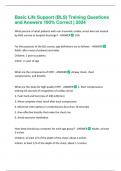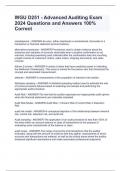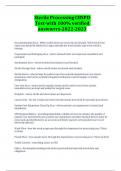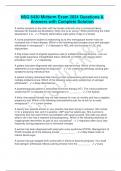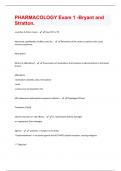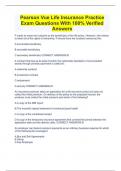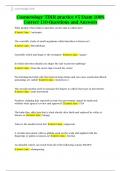Exam (elaborations)
PHNP - Purple Book 4th Edition 100 Questions fully solved(verified for accuracy)
- Course
- Institution
The purpose of the American Nurses Association's Psychiatric-Mental Health Nursing: Scope and Standards of Practice is to a. Define the role and actions for the NP b. Establish the legal authority for the prescription of psychotropic medications c. Define the legal statutes of the role of the ...
[Show more]




